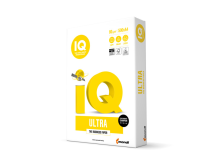Printing Industries of America’s President and CEO Michael Makin has written an open letter to Google CEO Larry Page and Chairman Eric Schmidt, challenging them on Googles Go Paperless in 2013 initiative.
This is the message from Michael Makin to the Printing Industries of America membership, encouraging the industry to reject Googles campaign:
Dear Members:
Once again our industry is under attack, and this time it is from Google, which has launched an initiative titled Go Paperless in 2013. It is joined in this effort by a number of digital companies which clearly have a vested interest in a non-paper communications stream.
Needless to say we find such a proposal ridiculous and an insult to the almost one million Americans who owe their livelihood to our industry.
In an open letter to Google CEO Larry Page and Chairman Eric Schmidt today, I challenged Google on its self-righteous environmental stance and noted that our industry has long led the way in utilising sustainable processes. The primary raw material for printing is paper, which comes from trees, which are a renewable resource—so renewable that today our country has 20 percent more trees than it did on the first Earth Day, which was held more than 40 years ago.
Printing is the only medium with a one-time carbon footprint—all other media require energy every time they are viewed. Electronic devices, which Google produces, for example, require the mining and refining of dozens of minerals and metals, as well as the use of plastics, hydrocarbon solvents, and other non-renewable resources. Moreover, 50-80 percent of electronic waste collected for recycling is shipped overseas and is often unsafely dismantled. For Google to call for a paperless world is hypocritical to say the least.
Regrettably, sentiments like those espoused by Google (and Toshiba, which backed down last year) are shared by others. This is why Printing Industries of America has spent time and resources putting together a tool that can be used to dispel the many misconceptions about our industry.
This campaign is called The Value of Print. It contains a flip-book that can be used by anyone to understand the issues and dispel the myths. It has four sections: Misconceptions, which gives responses to the common misconceptions about print; Effectiveness, which gives statistics on how print is an effective part of the marketing mix and how people still prefer print; By the Numbers, which discusses the importance of the industry and its large economic footprint; and Resources, which lists websites where more information on the subject can be found.
We also have a mobile app that provides a live RSS feed with the most up-to-date facts and statistics to support print’s effectiveness, supported facts to respond to misconceptions and confirm print’s effectiveness, and a searchable 2011 Print Market Atlas. The market atlas feature allows users to look at print statistics by selecting a location—national, state, or region. They can then look at an overview of the chosen location with shipments, establishments, and employment. Each of these overviews will allow for filtering by market segment and printing process. The results are displayed in a chart or graph format, whichever the user prefers. To download the app, you can go to your respective mobile app site today or visit http://value.printing.org/page/10574#mobile.
Being a part of this great industry, we can’t sit back and allow companies like Google to put information out there that is not based on facts. We are encouraging everyone to view a copy of the flip-book and help spread the true message about print. As I posed the question to the CEO of Google, how would he feel if the almost 1 million workers in our industry encouraged their family and friends to go Google-Less in 2013?





















